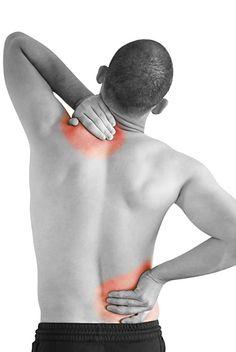Muscle stiffness and pain can affect anyone, whether you’re an athlete recovering from an intense workout or an office worker dealing with prolonged sitting. Addressing this discomfort effectively requires a combination of targeted techniques and lifestyle changes. Here’s a step-by-step guide to help you ease muscle stiffness and pain, including effective ways to use medication for muscle pain relief, such as taking over-the-counter pain relievers as directed and considering topical treatments for localized discomfort.
Step 1: Identify the Source of Discomfort
Understand the Cause: Begin by determining the root cause of your muscle stiffness and pain. It may result from overuse, poor posture, lack of physical activity, or an underlying medical condition like arthritis or fibromyalgia.
Self-Assessment: Pay attention to the affected areas. Is the pain localized or widespread? Understanding these details will help you choose the most effective remedies.
Consult a Professional: If the pain is severe or persistent, seek advice from a healthcare provider. They can rule out serious conditions and recommend specific treatments.
Step 2: Apply Immediate Remedies
Use Heat Therapy:
-
Apply a warm compress or heating pad to the stiff area for 15-20 minutes.
-
Take a warm bath with Epsom salts to relax tight muscles.
Try Cold Therapy:
-
Use an ice pack on inflamed or swollen areas for 10-15 minutes.
-
Alternate between heat and cold to reduce stiffness and promote circulation.
Gentle Massage:
-
Perform self-massage using circular motions to release tension.
-
Consider using massage tools or scheduling a professional massage session.
Step 3: Engage in Gentle Stretches
Neck and Shoulder Stretches:
-
Slowly tilt your head to each side and hold for 10-15 seconds.
-
Roll your shoulders forward and backward to release tension.
Back Stretches:
-
Lie on your back and bring your knees to your chest.
-
Perform a cat-cow stretch to loosen your spine.
Leg and Hip Stretches:
-
Stretch your hamstrings by touching your toes.
-
Perform lunges to open up your hips.
Stretching helps improve flexibility, enhances circulation, and reduces muscle tightness. Repeat each stretch 2-3 times, holding for 15-30 seconds.
Step 4: Stay Active
Incorporate Low-Impact Exercises:
-
Activities like yoga, swimming, or walking can improve muscle function and reduce stiffness.
Use Foam Rollers:
-
Roll over tight areas with a foam roller to release muscle knots.
-
Focus on areas like your calves, quads, and back for maximum relief.
Practice Strength Training:
-
Strengthening weak muscles can prevent future stiffness and pain.
-
Include exercises like squats, planks, and light weightlifting in your routine.
Step 5: Optimize Your Ergonomics
Adjust Your Workspace:
-
Ensure your chair, desk, and computer are at proper heights to prevent strain.
Maintain Good Posture:
-
Sit and stand with your shoulders relaxed and back straight.
-
Avoid slouching to reduce stress on your muscles.
Take Breaks:
-
Stand up, stretch, and move around every 30-60 minutes if you sit for long periods.
Step 6: Prioritize Hydration and Nutrition
Stay Hydrated:
-
Dehydration can lead to muscle cramps and stiffness. Aim to drink at least 8 glasses of water daily.
Focus on a Balanced Diet:
-
Consume foods rich in magnesium, potassium, and calcium, such as leafy greens, bananas, and dairy products.
-
Incorporate anti-inflammatory foods like fatty fish, nuts, and berries to reduce muscle pain.
Step 7: Leverage Over-the-Counter Remedies
Topical Treatments:
-
Use creams or gels containing menthol, capsaicin, or arnica to relieve pain.
Pain Relievers:
-
Consider over-the-counter options like ibuprofen or acetaminophen for temporary relief.
-
Always follow the recommended dosage and consult a doctor if needed.
Step 8: Develop a Relaxation Routine
Practice Deep Breathing:
-
Take slow, deep breaths to reduce tension and promote relaxation.
Meditate or Practice Mindfulness:
-
Spend 10-15 minutes daily focusing on your breath or guided meditations.
Incorporate Progressive Muscle Relaxation:
-
Tense and then relax each muscle group, starting from your feet and working upward.
Step 9: Adopt Preventative Measures
Warm Up and Cool Down:
-
Before exercising, spend 5-10 minutes warming up to prepare your muscles.
-
Cool down afterward with gentle stretches to prevent stiffness.
Wear Proper Footwear:
-
Choose supportive shoes that align your posture and reduce strain on your muscles.
Get Quality Sleep:
-
Ensure you get 7-9 hours of restorative sleep to allow muscles to repair and recover.
Step 10: Seek Advanced Interventions if Necessary
Physical Therapy:
-
Work with a physical therapist to create a personalized exercise and recovery plan.
Chiropractic Care:
-
Consider chiropractic adjustments to address alignment issues and muscle pain.
Alternative Therapies:
-
Explore acupuncture, aromatherapy, or biofeedback for additional relief.
Prescription Medications:
-
In severe cases, consult your doctor about muscle relaxants or prescription pain medications.
Final Thoughts
Easing muscle stiffness and pain requires a proactive and holistic approach. By combining immediate remedies, regular exercise, proper ergonomics, and healthy lifestyle choices, you can effectively manage and prevent discomfort. Remember to listen to your body and seek professional guidance when needed. Prioritizing self-care will ensure long-term muscle health and overall well-being.

